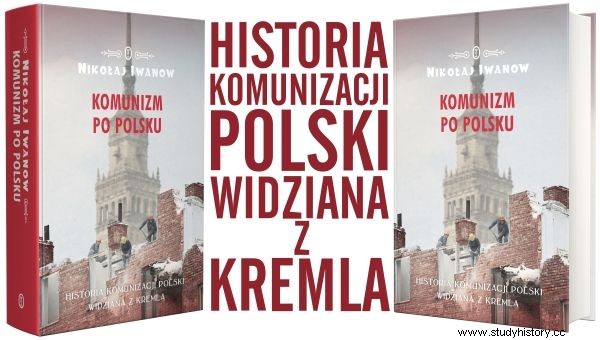Harassment, beatings, pogroms and murders - these were waiting in post-war Poland for Jews coming out of hiding and returning from camps. Polish fellow citizens exploded with hatred towards the Holocaust survivors. How many of them lost their lives in 1945-1947?
On the night of June 16, 1945, in Działoszyce, in the Kielce Province, armed people started hitting the house where the Holocaust survivors lived. When residents refused to open the door, a grenade was thrown inside. Its explosion killed four people.
That night in Działoszyce, the chairman of the local Jewish committee was murdered, 50 people were beaten and Jewish apartments were robbed.
On November 19 of the same year, two armed men entered the apartment of Jew Hohberg in Kraków, claiming to be officers of the Security Office. In addition to Hohberg, his mother and two sisters, six more Jewish Holocaust survivors lived in the premises. Alleged security officers ordered everyone to raise their hands and stand facing the wall. Then they killed three men with pistol shots, wounded one woman, and disappeared.
On May 2, 1946, a group of armed men stopped a truck passing there near Krościenko. There were twenty few Jews:men, women and children. The attackers ordered all passengers to get off, identified them, and then opened fire with a machine gun. They injured six people; they killed - twelve.
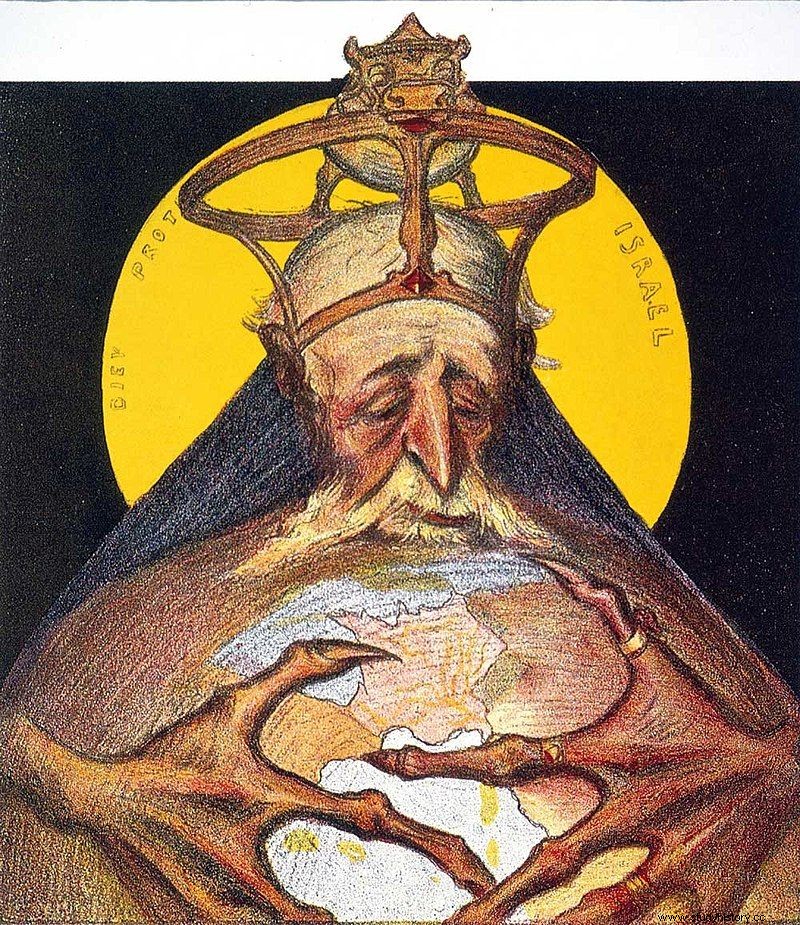
Anti-Semitism was "popular" not only in pre-war Poland. However, after the Holocaust, the campaign against Jews stopped in most countries. It was different in Poland. The illustration shows a French caricature of the world in the hands of a Jew.
So many have been killed and so many still are!
These are only three of the many murders of Jews committed in Poland after the war. In the years 1945-1947, the country, barely liberated from the Germans, was witnessed by a wave of surprisingly violent anti-Semitic riots, in which Polish citizens of Jewish origin lost their lives or health. So they did not enjoy the fact that they managed to avoid death at the hands of the Nazis for a long time ...
Jews leaving their hiding places, liberated from camps or returning from the East were met with reluctance, incomprehension and hatred. The reactions recorded by Helena Birenbaum, a concentration camp survivor, were on the agenda. At the sight of the camp number tattooed on her arm, they shouted:“Look, Jewish woman! They have been killed so many, and there are still so many of them!… Where did they all come from now ?! ”.
They are murdering Polish children!
Half the trouble if it ended with shouts. Often, however, the Jews faced physical aggression. They were attacked in their homes, apartments and trains. Jewish committees, aid centers and even orphanages were attacked. Jews were beaten, abused and killed. In March 1945, the report of the Department for Aid to the Jewish Population read:
From towns and villages, alarming news of harassment against the Jewish population, local authorities ignoring orders of higher authorities and organized killings of defenseless people come to the Central Jewish Committee every day Jewish. The situation is all the more tragic as the security authorities and the militia often look at the murders passively, and there have even been cases of participation of the police authorities in these murders .
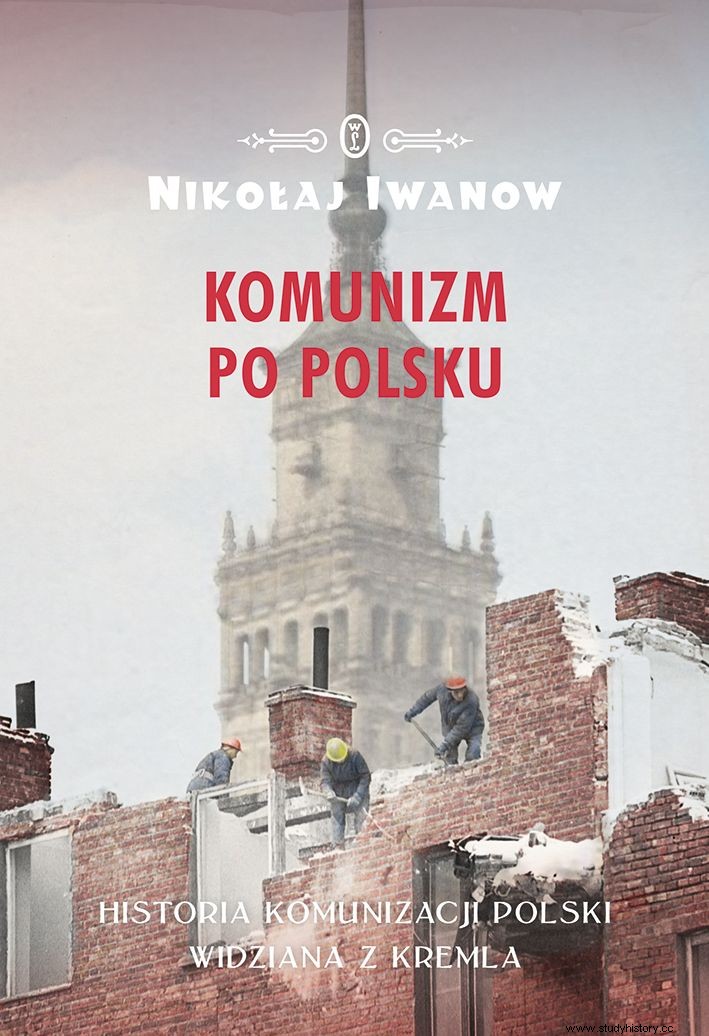
The article was written, among others based on the latest book by Nikolai Ivanov, "Communism in Polish" (Wydawnictwo Literackie 2017), presenting the history of Polish communization as seen from the Kremlin.
This was the case, for example, on August 11, 1945 in Kraków, where the pogrom of Jews took place. It was caused by a rumor about the murder of Polish children in the Kupa synagogue in Kazimierz. At this news, an aggressive crowd quickly gathered and went to the synagogue and tenement houses inhabited by Jews. There were also soldiers and militiamen. A dozen or so flats and the synagogue were plundered, from which the Torah scrolls were taken and burned. Women and children were beaten. Some of the victims were dragged out onto the street and tortured there. Poles, who stood up for the Jews, were scolded by the crowd. One person was certainly killed, although historians sometimes quote five.
The army shoots, the crowd murders
The rumor of a ritual murder prompted anti-Jewish riots in Rzeszów in June 1945. After the body of a nine-year-old girl was found in the basement of a tenement house inhabited by Jews, the aggression of the inhabitants of Rzeszów turned against the local Israelites. A dozen or so of them were beaten and a few flats plundered. Fortunately, no one was killed.
The pogrom, which took place on July 4, 1946 in Kielce, was much more extensive. Here, the catalyst was the rumor about the imprisonment by Jews in the basement of the building at ul. Planty 7, an eight-year-old boy who was also alleged to have committed a ritual murder. An aggressive crowd gathered in front of the house. Units of the army and the Internal Security Corps arrived at the scene. The soldiers, however, instead of dispelling the crowd, went inside and started shooting at the Jews who lived there.
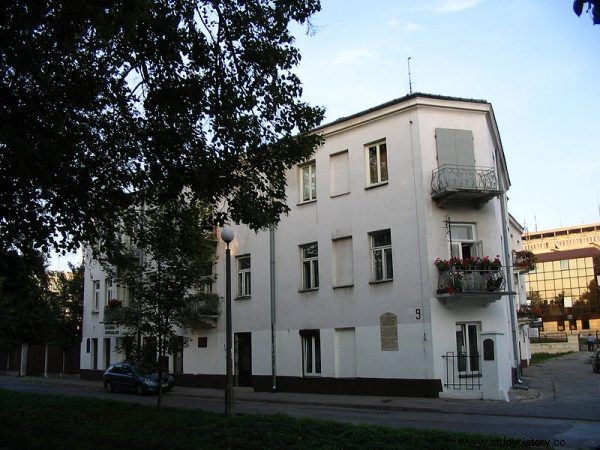
Tenement house at ul. Planty 7. It was here that the Poles carried out one of the cruelest pogroms of Jews after the war.
This was the signal to start the pogrom. Those not shot were dragged outside by the soldiers, where the crowd was lynching. Two women were thrown out the window and then killed . At noon, workers from the Kielce Metal Works, armed with sticks, pipes and stones, reached the building and continued the pogrom, killing the Jews who had survived. The flats of the murdered were robbed. People of Jewish nationality were also murdered on that day on trains going to Kielce and at nearby railway stations. In Kielce alone, 40 people were killed then - 37 Jews and three Poles who stood up for them.
A dozen pogroms, lynchings and excesses
Anti-Semitic riots also took place in Lublin, Częstochowa, Chełm, Tarnów, Mielec, Ostrowiec Świętokrzyski and Kolbuszowa, among others. However, there were even more individual statements against the Jews. Based on documents, accounts and memories, it can be said that their number was in the hundreds. Russian historian Nikolai Ivanov, in his latest book Communism in Polish, cites the note of the deputy of the Soviet war commander of Warsaw, Lt. Syczów, from April 4, 1945, entitled On the facts of anti-Semitism in Poland . We read in it:
Today, Jews are persecuted and killed by the reactionary underground as well as by those who should fight against lawlessness. We quote the facts:
- in the village of Zbenin, Troszyn commune, Ostrołęka poviat, at the beginning of March 1945, two Jews were killed:Wolf Andrejko and Jankiel Bergold. 3 policemen and a deputy village administrator took part in the murder;
- 3 policemen entered the town of Sniadów on March 22:Kazimir Krajewski, Bolesław Kurpecki and his brother. They were looking for a local Jew, Szurum Szmul. Later his body was found in the mill;
- Czmelew town, Opatów poviat. The local militiamen killed one Jew and hid the body in a rubbish bin opposite the police station .
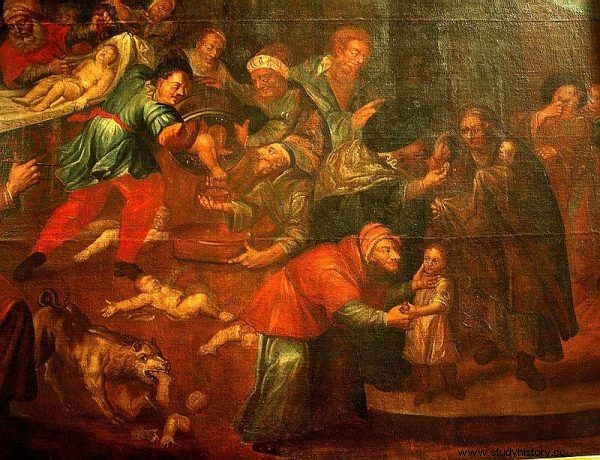
It is hard to believe that in the 20th century, accusations of the ritual murder of Christian children were still made as an argument for the campaign against the Jews. The illustration shows a painting by Karol de Prevot depicting the alleged ritual murder from the cathedral in Sandomierz (18th century).
This is only a fragment of Syczow's note. It cites 13 cases of attacks on Jews, in which 41 people were killed in total, and the document covers only the events of February and March 1945. "From the escape of the Germans until the end of 1946, over a dozen pogroms, lynchings and anti-Semitic excesses took place throughout the country," wrote Dr. Marcin Zaremba in his book Great Fear. Poland 1944-1947 .
Oh yes, Żydokomuna…
What was the cause of this aggression against Jewish fellow citizens? Let us once again give the floor to Nikolai Ivanov, who in the book Communism in Polish writes:
The marked rise in anti-Semitic sentiment in Poland after the war had several reasons. Firstly, Jews returning from forests, hideouts, guerrillas, and concentration camps could apply for the return of their pre-war property, which had long ago had new owners. Secondly, Jews were not without reason associated with the new people's government, completely foreign to most Poles. The stereotype of "Żydokomuna" had clear grounds in the form of a disproportionately large share of communists of Jewish origin in the structures of the new government .
For this, among other reasons, Jews were also murdered by some units of the anti-communist underground.
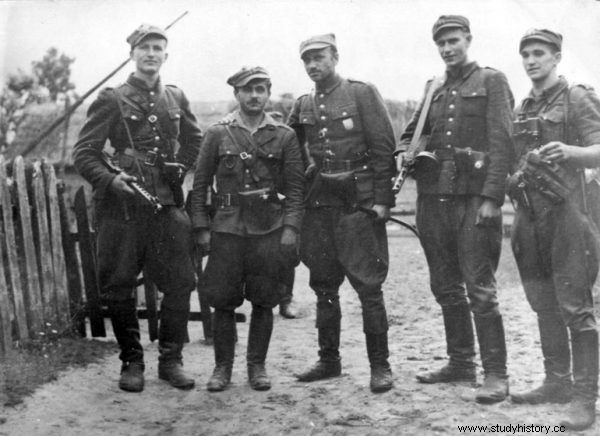
Soldiers of the 5th Vilnius Brigade of the Home Army, one of those known today as "cursed soldiers". According to the Russian historian Nikolai Ivanov, their authorities in post-war Poland accused them of murdering Jews. Was it really so?
From 500 to 2,500
How many Jews actually died at the hands of Poles after the war? As historians emphasize, it is very difficult to accurately determine the number of victims. Not all killings were documented, not all were reported, and not all of them are known. The new communist authorities wanted to cover up anti-Semitic demonstrations and lower their number, because it spoiled their image in the eyes of the West . Nevertheless, the researchers did manage to make some estimates.
In an article published in the 1990s, Dr.Joseph Adelson, entitled In what is known as the People's Poland estimated that in the years 1944-1947 1.5-2 thousand people were murdered. Jews. Other historians found these figures inflated. The American researcher David Engel, who studies the fate of Polish Jews during the war, reported a smaller number of deaths. Based on the documents of the Polish Ministry of Public Administration (MAP), he determined that 500-600 Jews lost their lives (20% of whom were women and children). His findings have also been criticized by some researchers, this time as too understated.

The article was written, among others based on the latest book by Nikolai Ivanov, "Communism in Polish" (Wydawnictwo Literackie 2017), presenting the history of Polish communization as seen from the Kremlin.
However, Marcin Zaremba, quoted earlier, emphasizes that the MAP figures used by Engel were prepared on the basis of the materials of the Central Committee of Polish Jews, which wanted the most scrupulous collection of data on all manifestations of anti-Semitism in Poland. In turn, Jan T. Gross in his book Fear. Anti-Semitism in Poland just after the war He refers to the already quoted Adelson (2,000 victims), as well as an émigré researcher of Polish-Jewish relations, Lucjan Dobroszycki, according to whom 2-2,500 died in Poland after the war. Jews.
The numbers, which are between the above-cited ones, are provided in his Great Fear, published in 2012 Marcin Zaremba. They amount to 650-750 killed. Marek J. Chodakiewicz, an American historian of Polish origin, in his work After the Holocaust. Polish-Jewish relations 1944-1947 writes that in "unclear circumstances" alone, between 271 and 474 Jews were killed.
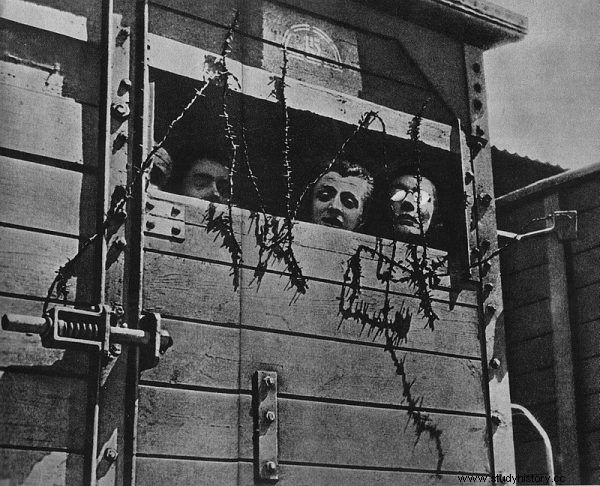
Even if they managed to survive the transport to the extermination camp or the camp, many of them were to die after the war, at the hands of their fellow citizens. Do we know the exact number of Jews killed by Poles after the war?
The latest findings on the number of Jews killed after the war are given by Karolina Panz in the article published in 2015 "Why did they, who suffered and survived so much, have to perish". Jewish victims of armed violence in Podhale in 1945 –1947 . Its detailed analyzes show that 33 people of Jewish origin died in Podhale in the post-war period, 26 of them within a dozen or so weeks, from the end of January to the beginning of May 1946. In most cases, they died at the hands of the soldiers of the anti-communist underground .
Among them were elderly people, young men, as well as women and children. During the occupation, they went through the hell of ghettos, hiding, Nazi or Stalinist camps and miraculously escaped death. After the war, they were killed not because they supported the communist regime (the author did not include people of Jewish origin who were functionaries of the government apparatus among the 33 victims), but only because they were Jews. As a summary of these considerations, let us quote from Fear Jana T. Gross:
Although we cannot establish the exact number of Jews murdered, still ( ...) the tragic meaning of this crime is expressed not so much by the number of people killed as by the fact that the victims were people who had just experienced the greatest catastrophe in the history of Poland ...
The unique history of Poland's communization from the Kremlin's perspective:
